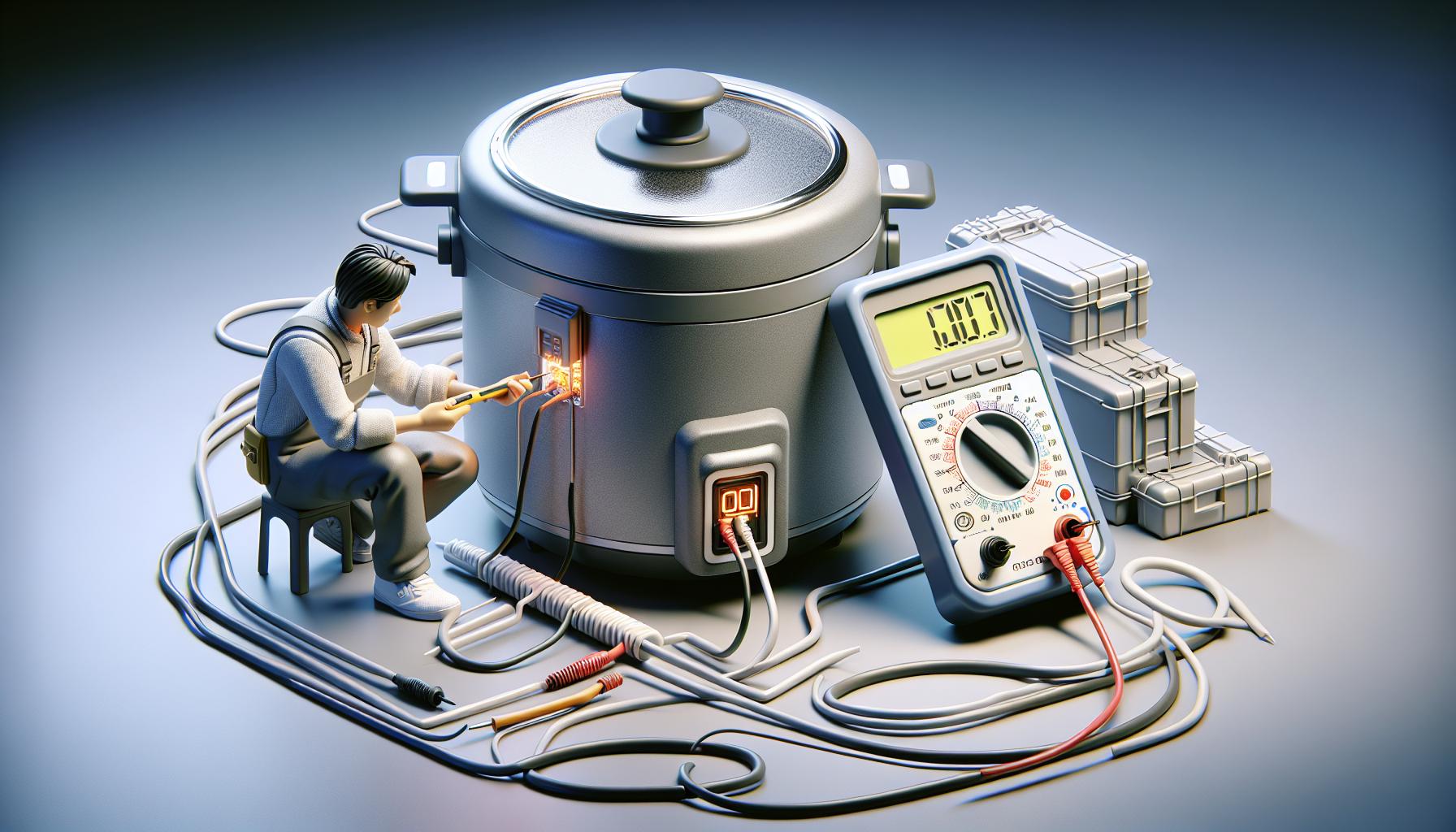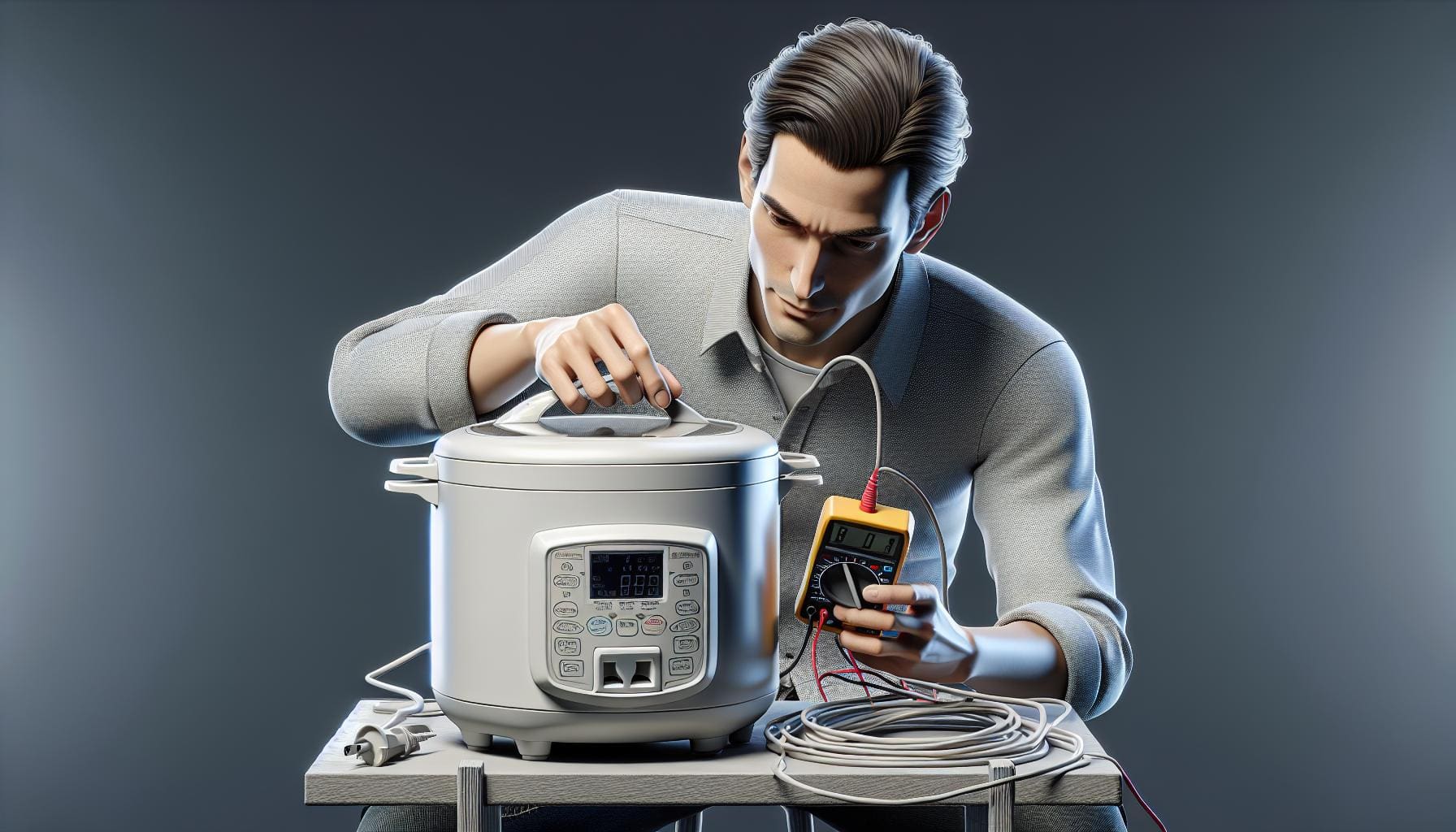So, it’s dinner time and we’re all set to enjoy a delicious bowl of perfectly cooked rice. But wait, our trusty rice cooker seems to have other plans today – it’s not heating up! Don’t worry, we’ve got you covered with some simple troubleshooting tips to get that rice cooker back in action in no time. A malfunctioning rice cooker can be frustrating, but with a little know-how, we can easily diagnose and fix the issue ourselves.
When our rice cooker refuses to heat up, it can throw a wrench in our dinner plans. But before we panic and start considering a replacement, let’s take a step back and assess the situation. From checking the power source to inspecting the heating element, we’ll walk you through the steps to identify the root cause of the problem. With a few quick fixes and a bit of patience, we’ll have our rice cooker up and running again, ready to serve up fluffy, perfectly cooked rice for our next meal.
Check Power Source
When dealing with a rice cooker that’s not heating up, one of the first things to inspect is the power source. Here’s how to troubleshoot this issue, catering to different experience levels:
For Beginners:
- Ensure the rice cooker is plugged in and the outlet is working by testing it with another device.
- Check if there’s a power outage in your area that could affect the appliance.
For Intermediate Cooks:
- Test the rice cooker with a different power outlet to rule out any issues with the initial socket.
- Verify that the power cord is not damaged or frayed, as this can cause electrical problems.
- Utilize a multimeter to check the continuity of the power cord and detect any faults.
- Inspect the internal wiring of the rice cooker for any signs of wear or damage that may be disrupting the electrical flow.
By carefully examining the power source and following these steps based on your level of expertise, we can pinpoint and address the issue causing the rice cooker not to heat up.
Inspect Heating Element

When a rice cooker is not heating properly, the heating element is a component that often requires inspection. Here, we provide step-by-step guidelines for individuals at different experience levels to help diagnose and resolve issues related to the heating element:
For Beginners: Checking the Basics
- Unplug the rice cooker and ensure it’s cool.
- Refer to the manufacturer’s guide to locate the heating element.
- Visually inspect the heating element for any visible damage.
For Intermediate Cooks: Testing with a Multimeter
- Disconnect the heating element from the power source.
- Use a multimeter to test the continuity of the heating element.
- A reading of zero indicates good continuity, while a different reading may signify a faulty element.
- If the heating element appears to be defective, consider replacing it with a compatible part from the manufacturer.
- Conduct a thorough inspection of the wiring connections leading to the heating element for any signs of wear or damage.
- Seek professional assistance if the issue persists to ensure a comprehensive assessment of the rice cooker.
By following these tailored suggestions based on expertise levels, you can effectively address heating element-related concerns in your rice cooker. Remember to prioritize safety measures throughout the inspection process for a smooth troubleshooting experience.
Clean the Rice Cooker
When it comes to maintaining a rice cooker, cleanliness is key to its proper functioning and longevity. Here are some tips for cleaning your rice cooker, catering to different experience levels:
For Beginners: Mastering the Basics
- Unplug the rice cooker and allow it to cool down before cleaning.
- Remove the inner cooking pot and wash it with warm, soapy water. Rinse thoroughly.
- Wipe the exterior of the rice cooker with a damp cloth, being careful not to get any water into the electrical components.
For Intermediate Cooks: Enhancing Your Cleaning Process
- Inspect the heating plate and scrub off any food residue using a soft brush or sponge.
- Check the lid and its seal for food particles. Clean them with a mild detergent.
- Run a mixture of water and vinegar through a cooking cycle to help remove any built-up residues.
- Disassemble the rice cooker if possible for a thorough cleaning.
- Soak the removable parts in a solution of water and baking soda to help break down tough stains.
- Use a toothbrush or cotton swab to clean hard-to-reach areas meticulously.
Remember, a clean rice cooker not only ensures hygienic cooking but also improves the appliance’s performance over time. Taking the time to clean your rice cooker regularly can prevent malfunctions and extend its lifespan.
Test and Troubleshoot
For Beginners: Checking the Basics
- Ensure the rice cooker is plugged in.
- Check if the power outlet is working.
For Intermediate Users: Advanced Troubleshooting
- Inspect the power cord for any damage.
- Test the cooker with a different power source.
- Reset the cooker to its default settings.
- Use a multimeter to check power flow.
- Verify the thermostat and heating element functionality.
- Consult the manufacturer for specialized support.
| Problem | Solution |
|---|---|
| Rice cooker not heating up | Check power source and reset settings. |
| Damaged power cord | Replace power cord immediately. |
| Faulty thermostat | Consult manufacturer or professional. |
Conclusion
We’ve covered troubleshooting steps for rice cooker users of all levels in this article. From beginners checking basic elements to advanced users using a multimeter for in-depth diagnostics, we’ve provided a range of solutions. Remember to always prioritize safety when dealing with electrical appliances. By following these steps, you can often resolve issues with your rice cooker not heating up. If problems persist, don’t hesitate to reach out to the manufacturer for specialized support. Stay proactive in maintaining your rice cooker to ensure its longevity and optimal performance. Happy cooking!

